Kathryn & Adrien
Things To Do

The Rock of Solutré
La Roche de Solutré The Rock of Solutré stands at an altitude of 495 metres, and is right at the heart of an area that is classified as a "Grand Site de France", made up of Solutré, Pouilly and Vergisson. This short 4-km hike along stony footpaths and rocky tracks will lead you progressively up the Rock of Solutré. At the top of this escarpement, you'll have an exceptional panoramic view over the Mâconnais vineyards. This prehistorical site was inhabited 40,000 years ago by hunter-gatherers; don’t miss the museum at the foot of the Rock.
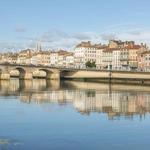
Visit Mâcon
Walk across the city of Mâcon La maison de bois Cathedral Saint Vincent Alongside the Saône river Restaurants Le poisson d’or (book in advance) Crêperie Er Bleimor (book in advance) Restaurant Pierre (one Michelin Star, book in advance) L’Ethym’Sel (book in advance) Pubs, bars and nightclubs VandB (Wine and Beer pub) Le 400 (smart dress up) L’embarcadère (at the port)
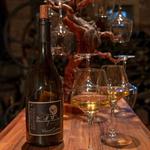
Oenotourism (wine tasting and tours) in Mâcon
The Mâconnais is the area furthest south of the Burgundy vineyard, from Sennecey-le-Grand to Saint-Vérand. (That's right, the famous Saint-Véran is produced here, even though the appellation doesn't have a "d" at the end.) The Mâconnais vineyard covers around 7,000 hectares, making it the biggest vineyard in Burgundy! Visit the domaine Gilles Noblet (TBC) Visit the domaine Papillon-Lavoignat (TBC) Miscellaneous tours: http://www.macon-tourism.com/uk/cellars-in-the-maconnais-and-the-beaujolais-macon-tourism-office
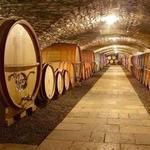
Oenotourism in Beaujolais
The world-famous Beaujolais wines are synonymous with celebrations and social occasions. The vineyards spread across the hills and villages like a landscape from Tuscany. The Hameau Dubœuf is the first theme park on the vine and wine in Europe, unique in its kind. It reveals in a playful, educational and immersive way all that the vine and the wine are to our heritage. Le Parc du Hameau Dubœuf (duboeuf.com) Visit the Château de Grand Pré in Beaujolais (TBC)

Museums, châteaux and outdoor activities
Burgundy is brimming with châteaux including majestic Bussy-Rabutin, ancient fortress Brancion, medieval Guédelon, Renaissance-style monument Ancy-le-Franc and much more. https://www.burgundy-tourism.com/discover-burgundy/heritage-sites-and-museums/top-10-must-see-chateaus/ Museums including: Musée des Beaux-Arts in Dijon, Musée Zervos in Vézelay, Maison de Colette in Saint-Sauveur-en-Puisaye, Musée du Châtillonnais-Trésor de Vix in Châtillon-sur-Seine. https://www.burgundy-tourism.com/discover-burgundy/heritage-sites-and-museums/top-10-museums-that-are-not-to-be-missed/ Bike tour exploring a portion of La Voie Bleue benefiting from the Saône’s rural atmosphere. Along this stretch, the way is dotted with villages that have retained their typical small-scale heritage, with Romanesque churches, vineyards, fine restaurants and more… https://en.lavoiebleue.com/suggestions/inspirations/chalon-macon
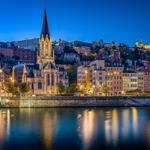
Visit Lyon
Lyon is one large World Heritage Site, with a big renaissance old town, Roman ruins, historic industrial districts and the regal 19th-century Presqu’île quarter. The city was founded 2,000 years ago at the confluence of the Rhône and Saône Rivers, and built its fortune on the silk trade. This industry furnished it with beautiful renaissance architecture. Vieux Lyon where semi-hidden passageways called “Traboules” connect courtyards with the Saône river. The splendid cathedral Saint Jean is a must see. Stop for a traditional meal at one of the many “Bouchons”. Croix-Rousse known as the “hill that works” where the Canus (name given to the silk workers in Lyon) made the city a major hub for textiles in Europe in the 19th century. Fourviere known as the “hill that prays” where its hill-top Basilica overlooks the city and the Ancient Roman theatre nearby. Parc de la Tête d’Or Presqu’île, a finger of land between the Rhône and Saône. The murals
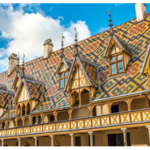
Hôtel-Dieu de Beaune
The Hospices de Beaune or Hôtel-Dieu de Beaune is a former charitable almshouse in Beaune, France. It was founded in 1443 by Nicolas Rolin, chancellor of Burgundy, as a hospital for the poor. The original hospital building, the Hôtel-Dieu, one of the finest examples of fifteenth-century Burgundian architecture, is now a museum. Beaune is the capital of Burgundy, famous for its wines regarded as the world’s finest – and most expensive!

Bresse countryside
Royal Monastery of Brou in Bourg-en-Bresse. A French national monument, this stunning monument was ordered by one of Renaissance Europe’s most powerful women as a dynastic burial place. Bresse is a unique farming region with a lot of distinctive traits including its own food, dialect, architecture and traditions. A typical Bresse farmhouse for instance will be half-timbered, with ears of corn hanging from its porch. Don’t miss la ferme des Planons. Food and gastronomy. At the heart of a region that owes its reputation to the quality of its poultry, you better believe that the chicken in Bourge-en-Bresse is off the charts. The local signature dish is Bresse Gauloise chicken in a rich cream sauce, and this goes well with a regional dry white Bugey wine. Georges Banc restaurant (3 Michelin Star) is a must try. – if your budget does not allow it try the cheaper Inn (just as good). One of the many restaurants that serve frogs (in garlic butter sauce) in the Dombes area.
